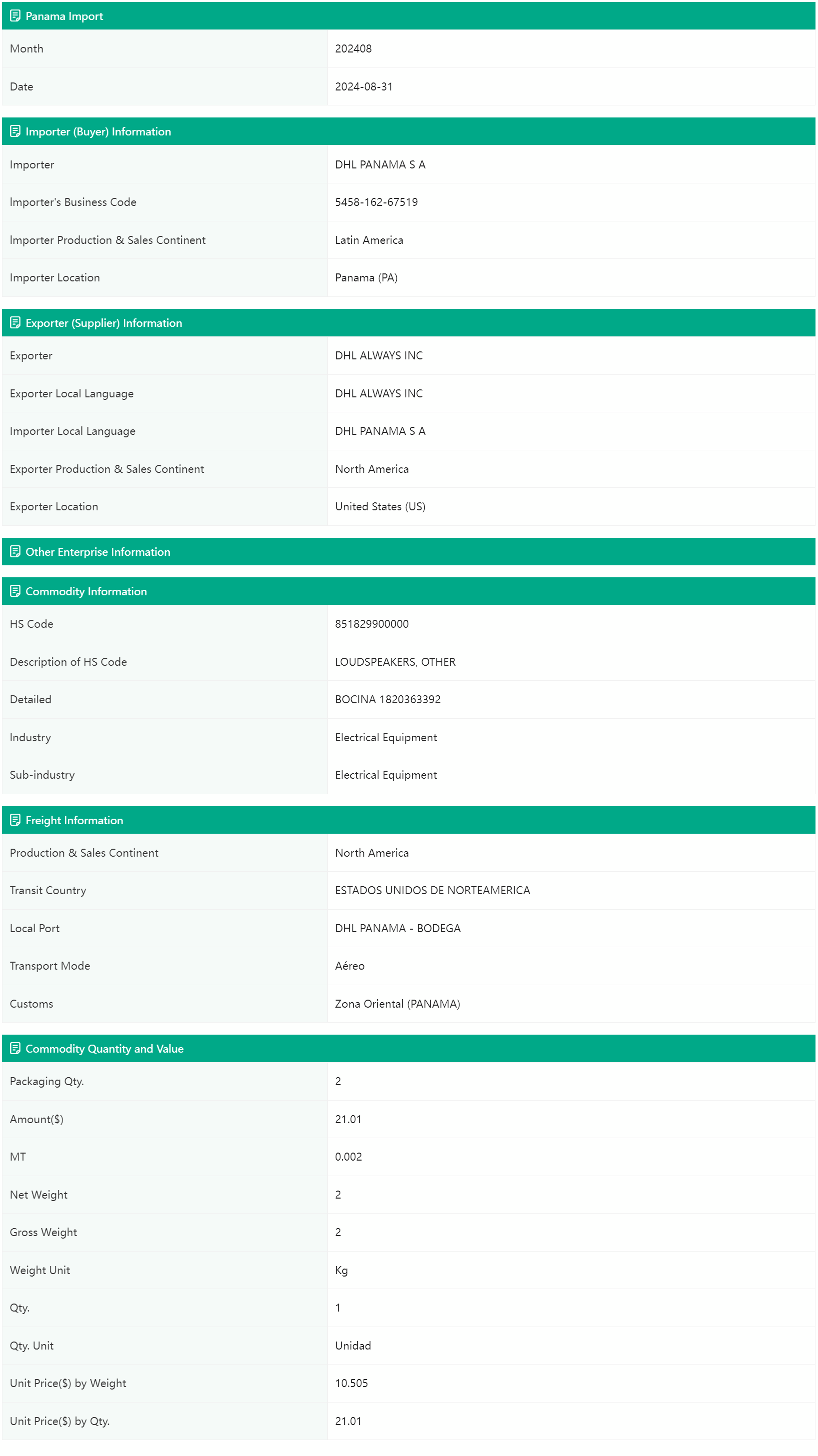Please Sign in to view recently saved searches.
The Republic of Panama is located in the Central American isthmus. It borders Colombia to the east and Costa Rica to the west. It is bordered by the Pacific Ocean to the south and the Caribbean Sea to the north. It connects Central America and South America. The Panama Canal connects the Atlantic Ocean and the Pacific Ocean from north to south and is known as the "world bridge".
The official language of Panama is Spanish. Some indigenous people use their own languages.
【Customs】
The most commonly used titles in Panama are Mr. and Ms., adult men are called Mr., married adult women are called Ms. or Mrs., and unmarried women can be called Miss. Taboos of Panamanians: Women do not like to be asked about their age, people hate to ask about the private lives and wages of men and women, and Panamanians believe that the 13th of each month is the most unlucky day.
【Copper Mining Industry】
Copper mining holds an important position in Panama's export of goods. In 2022, Panama's exports of copper ore and copper concentrates amounted to 2.8 billion U.S. dollars, accounting for 76.6% of the total export value. Cobre Panamá, invested by Canada's First Quantum, operates the largest copper mine in Central America and has become a very important enterprise locally.
【Planting Industry】
Bananas are Panama's second largest export product. In 2022, the export value of bananas was 130 million U.S. dollars, accounting for 3.5% of the total export value. Panama is also rich in tropical cash crops such as sugar cane and coffee. Fruits such as pineapples and watermelons are of high quality. Geisha coffee is famous around the world.
【Water Transport】
Panama is a major maritime country. The Panama Canal connects the Atlantic Ocean and the Pacific Ocean. About 5% of the world's trade cargo passes through the Panama Canal. Panama is the world's largest flag state. As of the end of June 2023, a total of 8,662 ships from all over the world are registered in Panama, with a total carrying capacity of 250 million tons.
The Port of Manzanillo, the Port of Cristóbal and the Port of Balboa operated by Hutchison Whampoa Panama Ports Company of Hong Kong, the Colon Container Terminal operated by Taiwan's Evergreen Company, and the PSA International Terminal of the Singapore Port Authority are Panama's most important ports.
The Panama Canal plays a very important role in Panama's water transportation industry. Each year, more than 13,000 ships from all over the world pass through this canal. Relying on the transportation advantages brought by the canal, Panama has established the Colon Free Trade Zone near the Atlantic side of the canal.
【Foreign Trade】
Panama is a member of the World Trade Organization and the Central American Integration System (SICA). Actively promote the signing of bilateral free trade agreements with major trading partners. As of June 2023, Panama has signed free trade agreements with the following countries and regions: El Salvador (2003), Singapore (2006), Chile (2008), Costa Rica (2009), Honduras (2009), Guatemala (2009), Nicaragua (2010), Peru (2012), the United States (2012), Canada (2013), the European Union (2013), Mexico (2015), Israel (2019), South Korea (2020), and the United Kingdom (2021).
Panama is a beneficiary country of the United States' Caribbean Basin Initiative and also a beneficiary country of the Generalized System of Preferences. Therefore, products produced in Panama can be exported to the United States and Europe without quota restrictions and enjoy preferential tariffs (but must meet origin regulations).
From January to July 2023, Panama's top five sources of imports are in turn the Colon Free Trade Zone, the United States, China, Mexico, and Costa Rica. The main imports are crude oil products, pharmaceuticals, automobiles, etc.
From January to July 2023, Panama's top five export destinations are in turn China, Japan, South Korea, Spain, and India. The main export products are copper ore and copper concentrates, bananas, frozen shrimp, pharmaceuticals, fishmeal, steel waste, palm oil, rum, etc.
The most recent report on the performance of Panama's goods exports, corresponding to the cumulative figure up to July 2024, shows a significant increase, establishing the highest value recorded in the first seven months of the year since 2010.
During this period, registered exports reached 561.7 million dollars, representing a 2.9% increase compared to the 545.8 million dollars in the same period in 2023.
Regarding tariff fractions, bananas continue to be the main export product, representing 13.7% of the total. Frozen shrimp follow (8.3%), raw cane sugar (7.9%), and fish fats and oils (6.7%). Other prominent fractions include iron or steel waste, raw teak, crude palm oil, fishmeal, antihistamine and antipyretic drugs, and decaffeinated roasted coffee. Together, these 10 fractions account for 58.9% of total exports.
In terms of export destinations, the main markets for Panama in the first seven months of 2024 were the United States, with 113.8 million dollars; the Netherlands, with 76.3 million dollars; and Taiwan, with 56.7 million dollars.
The total accumulated exports up to July 2024, which includes both registered exports and added value from special regimes, free zones and Panama Pacific, amounted to 752.9 million dollars. This represents an increase of 48 million dollars (6.9%) compared to the same period of the previous year, when the total was 704.5 million dollars.
【Blooming Trade Data】
Panama customs data is updated periodically with reliable data sources. Detailed transaction data includes detailed information of importers, exporters, cargo information, freight information, and key price and volume information such as commodity trading volume, transaction amount, and transaction unit price, helping you easily grasp the latest import and export market information in Panama.
Are you looking to understand market demand in Panama? Do you want to expand your international presence there? Are you seeking stronger partnerships with clients and reliable suppliers in Panama?

Sample Data


Would you like to stay informed about your competitors' activities in the Panamanian market?
